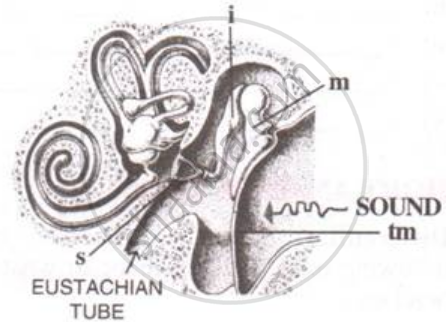Advertisements
Advertisements
प्रश्न
The median canal of cochlea is filled with ______.
विकल्प
Perilymph
Lymph
Endolymph
Tissue fluid
उत्तर
The median canal of cochlea is filled with endolymph.
संबंधित प्रश्न
Write short notes on the following Ear ossicles
The number of oscillations per second of a vibrating object is called its time period.
Lightning and thunder take place in the sky at the same time and at the same distance from us. Lightning is seen earlier and thunder is heard later. Can you explain?
Mention the exact location of the Eustachian tube
find odd one from following: Malleus, iris, Stapes, Incus.
the biological/technical terms for a thin membrane covering the entire front part of the eye.
Differentiate between the Rods and Cones of Retina (Type of pigment)
Differentiate between members of the following pair with reference to what is asked in bracket.
Dynamic balance and static balance (Definition)
Mention if the following statement is true (T) or false (F) Give reason.
Malleus incus and stapes are collectively called the ear ossicles.
Where is the Utriculus located? Briefly mention its function.
The figure below is the sectional view of a part of the skull showing s sense organ:

Name the sense organ.
How could you convince a small child that when you speak, it is not necessary for air to travel from you mouth to the ear of listener?
What is the name of passage in outer ear which carries sound waves to the ear-drum ?
Write whether the following is true or false:
The part of the ear associated with balance is the cochlea.
Differentiate between:
Cochlea and Concha.
Mention, if the following statement is True or False
Cochlea of the ear is concerned with the sense of balance.
State the functions of the following:
Semi-circular canals
The eardrum is known as ______.
The part of the inner ear which is responsible for hearing is ______.
- Draw a neat and well labelled diagram of the membranous labyrinth found in the inner ear.
- Based on the diagram drawn above in (i), give a suitable term for each of the following descriptions:
- The structure responsible for hearing.
- The sensory cells that help in hearing.
- The membrane-covered opening that connects the middle ear to inner ear.
- The nerves that carry impulses from the ear to the brain.
- The tube which equalises the air pressure on either side of the ear drum.
